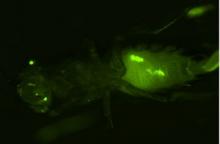In order to respond appropriately to changes in the environment, living cell possess intrinsic mechanisms that sense extracellular signals, transmit them into the cell and compile them to an accurate cellular response.
Many of the critical signaling pathways are initiated with the activation of the various subfamilies of Receptor Tyrosine Kinases. Given their significance, it is not surprising that point mutations that lead to over-activation of effectors throughout the pathway were found to be associated with numerous types of cancers.
Interestingly, however, the components that eventually initiate the cellular reaction, the Extracellular-Regulated Kinases 1/2 (ERK1/2), have not been shown to specifically play a causative role in cancer. Thus, the questions regarding the exact functions of each Erk variant within the overall pathway and whether Erks can become oncogenic are very intriguing. These questions can now be addressed using Erks molecules that harbor specific point mutations that render them spontaneously active, recently developed in our laboratory. In our latest study we used the Drosophila fly model in order to test if these mutated Erks can also be spontaneously active in an organism model and if so, how will they affect cellular processes in the fly including malignancy.
We found that a fly ERK ortholog harboring the activating mutations promotes the characteristic formation of wing veins and eye structure in flies in which the signaling pathways regulating these processes were genetically inhibited. Moreover, expression of the mutated Erks induces tissue overgrowth in an established Drosophila cancer model.
Taken together, our findings indicate that activating mutations can endow Erk with pro-proliferative, tumorigenic capabilities, and that Drosophila provides an effective platform with which to evaluate the activity and oncogenic potential of Erk mutations.
